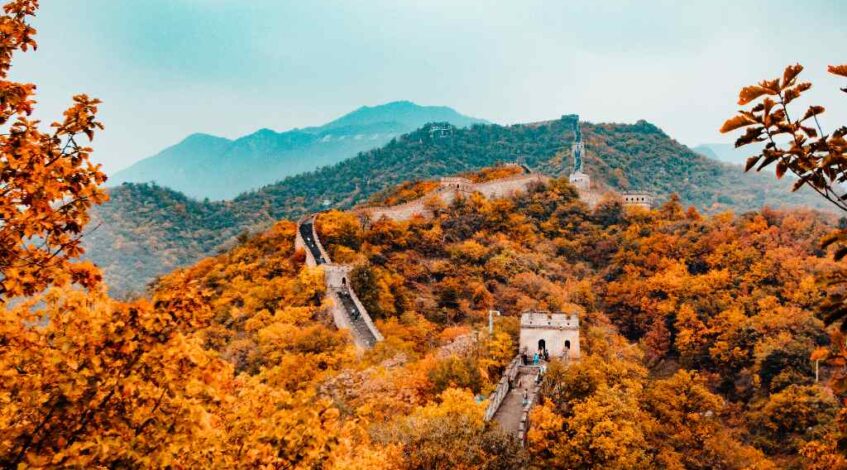Eastern art, with its rich history and diverse forms, has had a profound influence on Western culture. From the serene beauty of Japanese ink paintings to the intricate designs of Indian motifs, Eastern aesthetics have penetrated various facets of Western art and lifestyle. This intermingling of cultures has led to a mutual appreciation and understanding, shaping the global art landscape in the process.
Eastern Foundations: Origins
Eastern art, steeped in traditions, is intrinsically tied to the region’s history, religion, and philosophy. Countries like China, India, and Japan have nurtured unique art forms for millennia. They incorporate deep-rooted principles such as harmony, balance, and nature.
- China: With its ancient dynasties, Chinese art captures its vast history. Scrolls, ceramics, and ink paintings often depict natural landscapes and daily life, emphasizing harmony between humans and nature.
- India: As the birthplace of religions like Hinduism and Buddhism, India’s art is closely linked to its spiritual beliefs. Vibrant colors, intricate patterns, and religious motifs dominate its paintings, sculptures, and architecture.
- Japan: Japanese art, from its Ukiyo-e woodblock prints to the art of Kintsugi (repairing broken pottery with gold), revolves around the impermanence of life, the beauty of nature, and simplicity.
Western Embrace: Early Interactions
The fascination with Eastern art in the West began as early as the Roman Empire but became more pronounced during the Renaissance.
- Trade Routes: The Silk Road facilitated not only trade but also cultural exchange. Precious artworks, fabrics, and motifs found their way into European courts, influencing their tastes.
- Colonial Expeditions: As European powers colonized parts of Asia, they brought back with them exotic treasures, artifacts, and artworks that captivated Western audiences.
- World Expositions: Events like the Paris Exposition of 1900 introduced Western audiences to the wonders of Eastern art and craftsmanship, further fueling their fascination.
Artistic Fusion: Shared Themes
Over time, mutual appreciation led to collaborations and the blending of styles, resulting in hybrid art forms that combined the best of both worlds.
- Impressionism: European artists, like Monet and Van Gogh, were deeply influenced by Japanese art. The use of light, color, and everyday scenes in Japanese Ukiyo-e prints resonated with the principles of Impressionism.
- Art Nouveau: This movement, with its curving lines and floral motifs, drew heavily from Japanese and Chinese aesthetics.
- Modern Art: Abstract expressionism, minimalism, and other 20th-century movements found parallels in Eastern philosophy and its artistic expressions.
Contemporary Reflections: Eastern Aesthetics Today
In today’s globalized world, the influence of Eastern art on Western culture is more apparent than ever.
- Fashion: Designers like Chanel and Dior have drawn inspiration from Chinese and Japanese textiles, patterns, and silhouettes.
- Cinema: Eastern storytelling techniques, themes, and even specific genres, such as anime, have influenced Western filmmakers and audiences.
- Design and Architecture: The principles of Feng Shui, Zen gardens, and the minimalist aesthetics of Japanese interior design have become popular in Western households.

Tech Meets Tradition: Digital Evolution
In the age of technology, it’s intriguing to see how Eastern art and aesthetics have been integrated and redefined in the digital realm, making them accessible and relatable to a wider global audience.
- Digital Art and Animation: The popularity of Japanese anime and manga has skyrocketed, influencing Western animation studios and comic book artists. Platforms like DeviantArt and ArtStation see a confluence of traditional Eastern themes with modern digital techniques. Additionally, the rise of K-Pop and its visually rich music videos exemplify the blend of East and West in the digital entertainment sector.
- Virtual Reality (VR) and Augmented Reality (AR): Virtual exhibitions and digital walkthroughs of iconic Eastern art museums, temples, and historic sites are bridging gaps for those who can’t experience them firsthand. AR apps, on the other hand, bring Eastern art into Western living spaces, allowing users to virtually place a Ming vase or a Japanese Byōbu (folding screen) in their room.
Culinary Canvas: Food as Art
One cannot truly appreciate the depth of Eastern influence without mentioning the culinary arts. Food, in its essence, is as much a form of art as it is about sustenance. The West’s embrace of Eastern cuisine goes beyond just flavors; it’s about the artistry and philosophy behind each dish.
- Presentation and Philosophy: The meticulous presentation in Japanese sushi, the vibrant colors of Indian curries, or the intricate designs of mooncakes during the Chinese Mid-Autumn Festival are all testaments to the visual appeal of Eastern cuisine. More than that, they signify the philosophy of balance, harmony, and respect for ingredients.
- Western Adaptations: Fusion dishes like sushi burritos or curry pizzas showcase how Eastern culinary arts have been adapted and reinvented in Western kitchens. These dishes, while rooted in Eastern traditions, cater to Western palates, exemplifying the seamless blend of two cultures on a plate.
The beauty of this cultural exchange lies in its ever-evolving nature. As East and West continue to interact, they create art that resonates with a global audience, proving that creativity knows no boundaries.
The Future: A Continuous Dialogue
The conversation between Eastern and Western art is ongoing, with artists from both regions continually learning from and influencing each other. Festivals, exhibitions, and collaborations across various art forms ensure that this rich tapestry of cultural exchange continues to thrive.
In conclusion, Eastern art, with its deep-rooted traditions and unique aesthetic principles, has not only found appreciation in the West but has seamlessly woven itself into its fabric. This symbiotic relationship underscores the universality of art and its power to transcend borders and cultural divides. As we look to the future, it’s evident that the dance between East and West will continue, enriching the global art landscape for generations to come.

